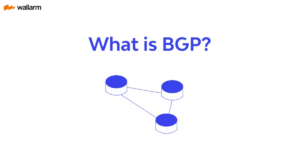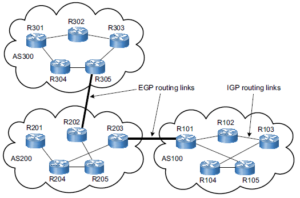The Internet Protocol: Border Gateway Protocol (BGP) Overview
2 min readBorder Gateway Protocol (BGP) is an exterior gateway protocol used on the internet and ISPs to exchange routing and reachability information. BGP is a layer 4 path vector routing protocol that uses port 179. It is the only EGP that is still in use today. The current BGP version is BGPv4 which was published as RFC 4271 in 2006.
Unlike other IGPs (OSPF, EIGRP, or RIP), BGP has many metrics or attributes in choosing the best path in the network. These attributes are for path manipulation. We will check it one by one as those attributes influence either inbound or outbound traffic.
BGP is further classified into two: eBGP and iBGP. When peers that run BGP within the same AS, it is called iBGP (Internal Border Gateway Protocol) and peers that run BGP session in different AS, it is called eBGP (External Border Gateway Protocol). The iBGP and eBGP differ on how routes are propagated in other peers. Routes learned from an iBGP peer will never be learned or advertised to another iBGP peer because of a “Split Horizon Rule.” In order for a route to be learned from an iBGP neighbor, it must be first known via IGP. This is called the “Synchronization Rule.” This will be later explained as we progress to Split Horizon Rule solutions.
BGP is the slowest routing protocol but being the slowest makes it a perfect routing protocol on the internet. The 3 minute convergence time is designed that way in order to prevent constant link flap. Now, you might be thinking why do we have to use BGP. Aside from the fact that it is a slow protocol, EIGRP and OSPF can also do the routing of the traffic to the internet. I think the better question here is when to use BGP. It doesn’t make sense if we are going to use BGP if we have only one or a single connection to the ISP. There is only one exit path so a default route can do the job. This is called a single-homed connection. But what if we have a dual multihomed design, which means dual connections (dual links) to two different ISPs, then BGP is far more useful than IGP. BGP attributes can be configured to better manipulate the path to the destination.
BGP RELATED TOPICS:
- BGP Path Attributes Types
- AS Number Range
- BGP Neighbor States
- BGP Message Types
- BGP Attributes
- BGP Next-Hop-Self
- BGP Communities
- BGP Multipath
- BGP Route Reflector
BGP CONFIGURATION / LABS
- Basic BGP Configuration
- Configuring iBGP and eBGP
- BGP Confederation
- eBGP Multihop
- Redistributing OSPF into BGP
- BGP AS Path Attribute
- BGP Local Preference
- BGP MED
- BGP Authentication






